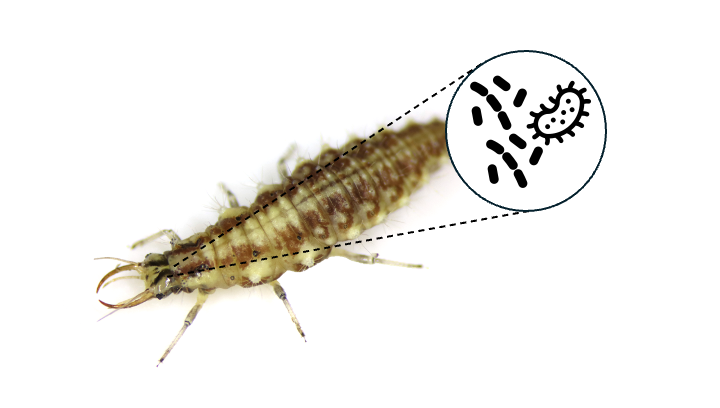The symbionts within: Revealing the hidden allies of venomous creatures and their role in toxin production
Venoms are complex cocktails composed mainly of ten to hundreds of proteins and peptides, known collectively as toxins, that usually have evolved via duplication and subsequent neofuncitonalisation of physiological genes. However, there is circumstantial evidence that suggest symbiotic bacteria may also contribute to venoms. These are widely present in insects and play crucial roles in feeding, reproduction, and immune systems, but their role in venom systems remains largely unexplored.
The student will characterize the symbiotic bacteria of an venomous insect species using metagenomics. Then, the student will apply proteomics to identify bacterial proteins in the venoms. Evolutionary analysis will be conducted to assess the functional relevance of these bacterial components in the venom system.
Methods:
Genomics, proteomics, transcriptomics

Group and project
Our research group consists of nine members, each specializing in the evolution of venomous species, encompassing both invertebrates and vertebrates. Each member brings their unique expertise and professional networks to the table, offering the student an exceptional opportunity for knowledge acquisition and growth. We foster a collaborative environment through various activities, including a bi-weekly journal club where we engage in discussions of research questions related to venom and evolution in general. Additionally, we hold weekly lab meetings, providing a platform for both presenting and discussing the diverse projects that our group is actively involved in. Beyond our scientific pursuits, we also organize social events that contribute to build up our teamworking environment. The work carried out by the student will be part of a larger project funded by the Norwegian and European Research Councils, which aims to elucidate the venom system of Neuroptera by combining omics techniques, and comparative molecular and morphological evolution with evolutionary quantitative genetics. This multidisciplinary approach will elucidate the genetic and evolutionary mechanisms that underlie the emergence of venoms as complex evolutionary novelties and identify the molecular properties that facilitate or constrain their evolution across micro- and macroevolutionary timescales.
Please contact Eivind Andreas Baste Undheim or Marius Filomeno Maurstad for a meeting to learn more about the project.